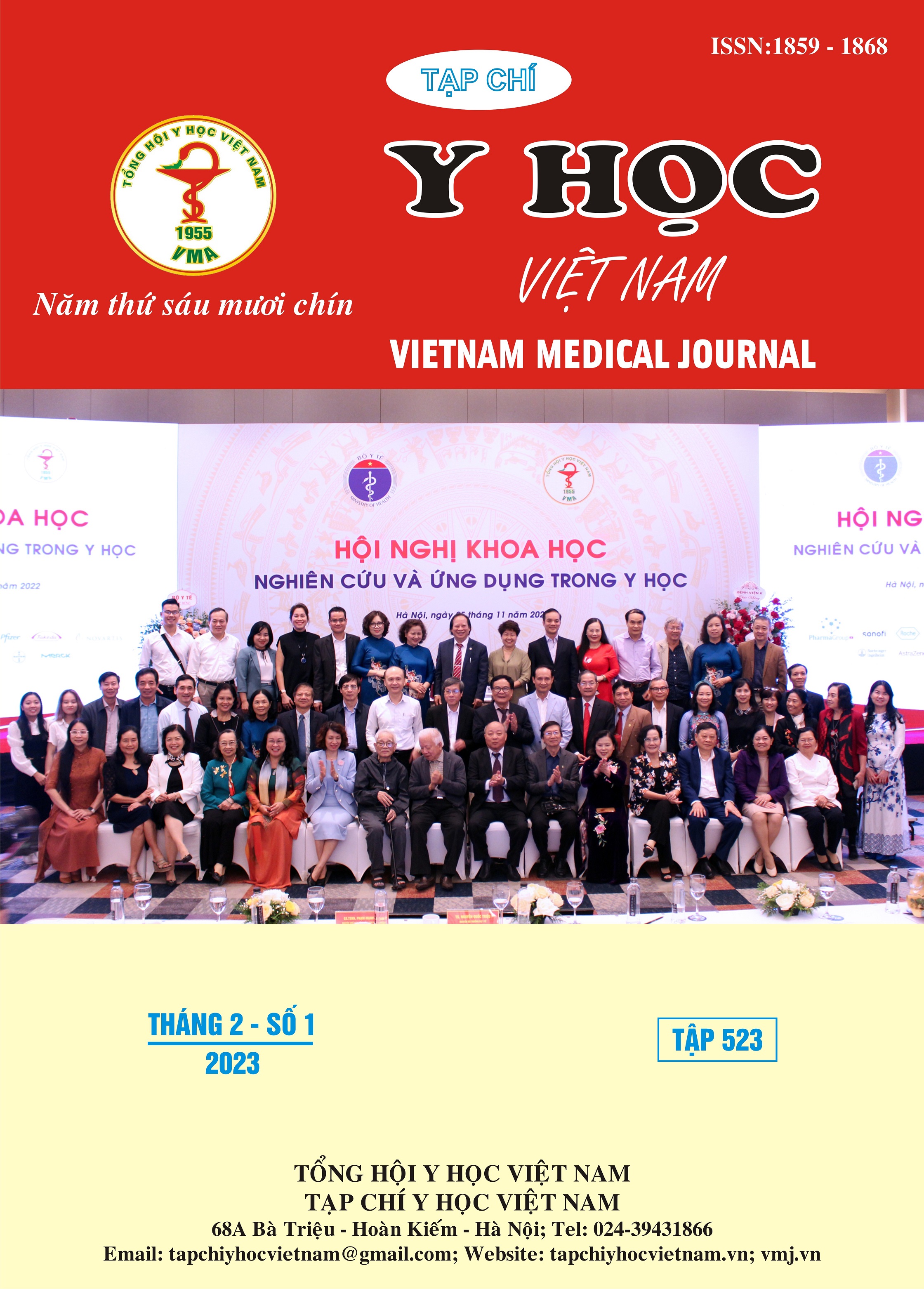RESULT OF LAPAROSCOPIC SURGERY FOR UPPER RECTAL CANCER AT DANANG ONCOLOGY HOSPITAL
Main Article Content
Abstract
Objectives: Describe the clinical, paraclinical characteristics and results of laparoscopic surgery for upper rectal cancer. Subjects and methods: A case series descriptive study on 41 upper rectal cancer patients treated by laparoscopic surgery at Da Nang Oncology Hospital from January 2020 to October 2022. Results: The mean age was 63.22±10.14, 43,9% patients presented with hematochezia, the tumors type of ulceration were the most common (48.8%), Six patients received preoperative chemoradiation. The postoperative stage is mainly stage II, III with the rate of 43,9% and 34.1%, respectively. All tumors were of the adenocarcinoma type and most were moderately differentiated (92.7%). The average surgical time was 191.34±52.43 minutes, there were no cases that had to be converted to open surgery, there were 31.7% with TME and 68.3% with PME, all cases have R0 margin, there were 12,2% patients with ileostomy. The average postoperative hospital stay was 9.02±2.39 days. There were no intraoperative complications, the overall postoperative complication rate was 7.3% with 4.9% wound infection and 2.4% pneumonia, no major complications and postoperative mortality. Conclusion: Laparoscopic surgery for upper rectal cancer is safe and feasible with a low rate of complications while maintaining oncologic criteria.
Article Details
Keywords
upper rectal cancer, laparoscopic anterior resection
References
2. Trịnh Lê Huy và Phạm Đức Tuấn, "Kết quả sớm phẫu thuật nội soi 3d cắt đoạn trực tràng điều trị ung thư trực tràng ở người cao tuổi", Tạp chí Y học Việt Nam (2022) 514(1) tr 49-52
3. Trần Ngọc Thông và các cộng sự., "Đánh giá chất lượng cuộc sống của bệnh nhân ung thư trực tràng trên và giữa được điều trị phẫu thuật nội soi cắt trực tràng trước thấp.", Tạp chí Y học lâm sàng (2020). 66, tr. 29-38.
4. Trần Ngọc Thông và các cộng sự, "Đánh giá kết quả phẫu thuật nội soi cắt trực tràng trước thấp trong điều trị ung thư trực tràng trên và giữa", Tạp chí Y Dược học -Trường Đại Học Y Dược Huế (2017), tr. 182-189.
5. R. Glynne-Jones và các cộng sự., "Rectal cancer: ESMO Clinical Practice Guidelines for diagnosis, treatment and follow-up", Annals of Oncology (2017). 28, tr. iv22-iv40.
6. K. Y. Lee, "Factors Influencing Oncologic Outcomes after Tumor-specific Mesorectal Excision for Rectal Cancer", J Korean Soc Coloproctol (2012). 28(2), tr. 71-2.
7. F. Lopez-Kostner và các cộng sự, "Total mesorectal excision is not necessary for cancers of the upper rectum", Surgery (1998). 124(4), tr. 612-7; discussion 617-8.
8. Hyuna Sung và các cộng sự., "Global Cancer Statistics 2020: GLOBOCAN Estimates of Incidence and Mortality Worldwide for 36 Cancers in 185 Countries", CA: A Cancer Journal for Clinicians (2021). 71(3), tr. 209-249.
9. N. Tabchouri và các cộng sự, "Neoadjuvant Treatment in Upper Rectal Cancer Does Not Improve Oncologic Outcomes But Increases Postoperative Morbidity", Anticancer Res (2020). 40(6), tr. 3579-3587.


